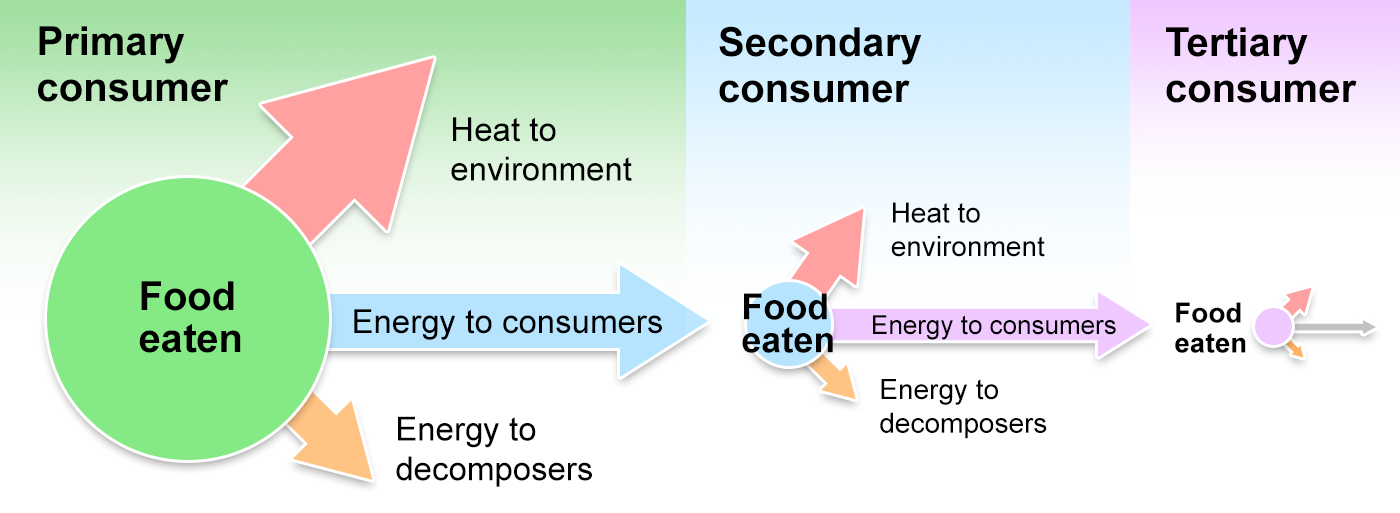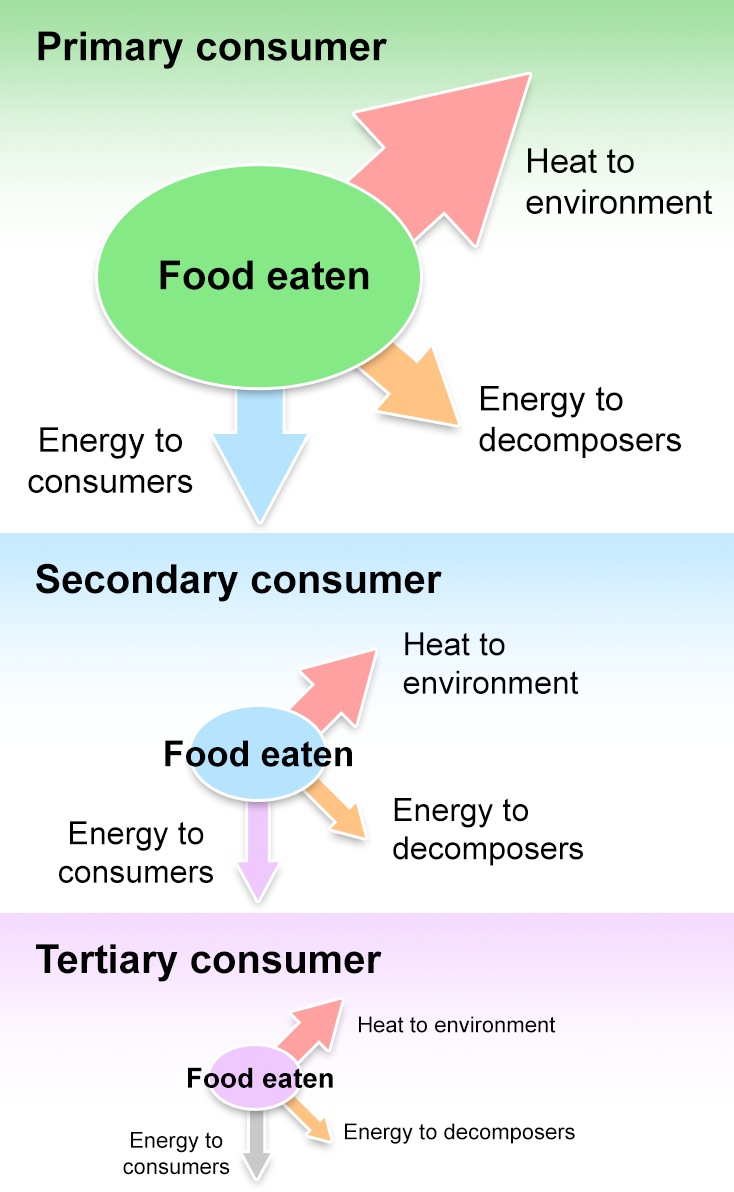Food Chain Efficiency
Each trophic level in a food chain—producers, primary consumers, secondary consumers, and so on—provides food, and thus energy, to the next level. But not all the energy in one level goes to the next. Some energy is left behind in uneaten food or waste, which goes to decomposers. A lot of energy is also released as heat during cellular respiration.
In general, only about 10% of the energy in one trophic level is passed on to the next. This percentage may vary from 5%–20% depending on the types of organisms and ecosystem.

Primary consumers eat plants and the amount of energy is represented by a green circle. Arrows pointing out of the circle represent the fate of that energy: most is released to the environment as heat, some is stored (and passed on to the next trophic level as energy to consumers), and some is excreted as waste. The same processes are depicted at the next trophic level but the starting energy is based on the arrow from the previous trophic level. The processes repeat again for the third trophic level and all the arrows get smaller.

Primary consumers eat plants and the amount of energy is represented by a green circle. Arrows pointing out of the circle represent the fate of that energy: most is released to the environment as heat, some is stored (and passed on to the next trophic level as energy to consumers), and some is excreted as waste. The same processes are depicted at the next trophic level but the starting energy is based on the arrow from the previous trophic level. The processes repeat again for the third trophic level and all the arrows get smaller.